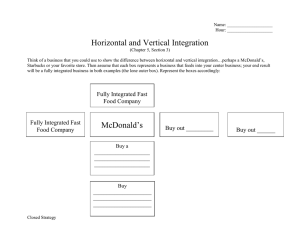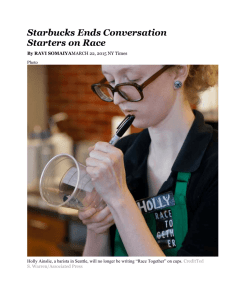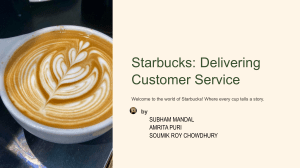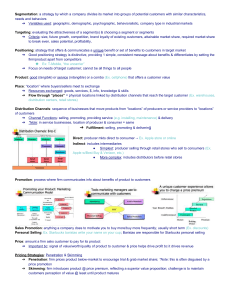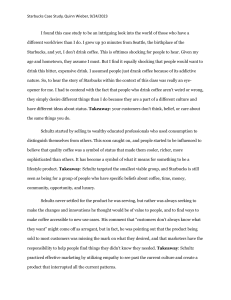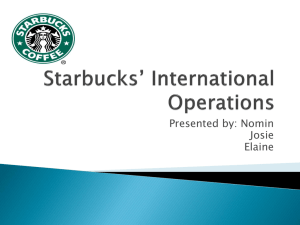Starbucks Case Study
advertisement
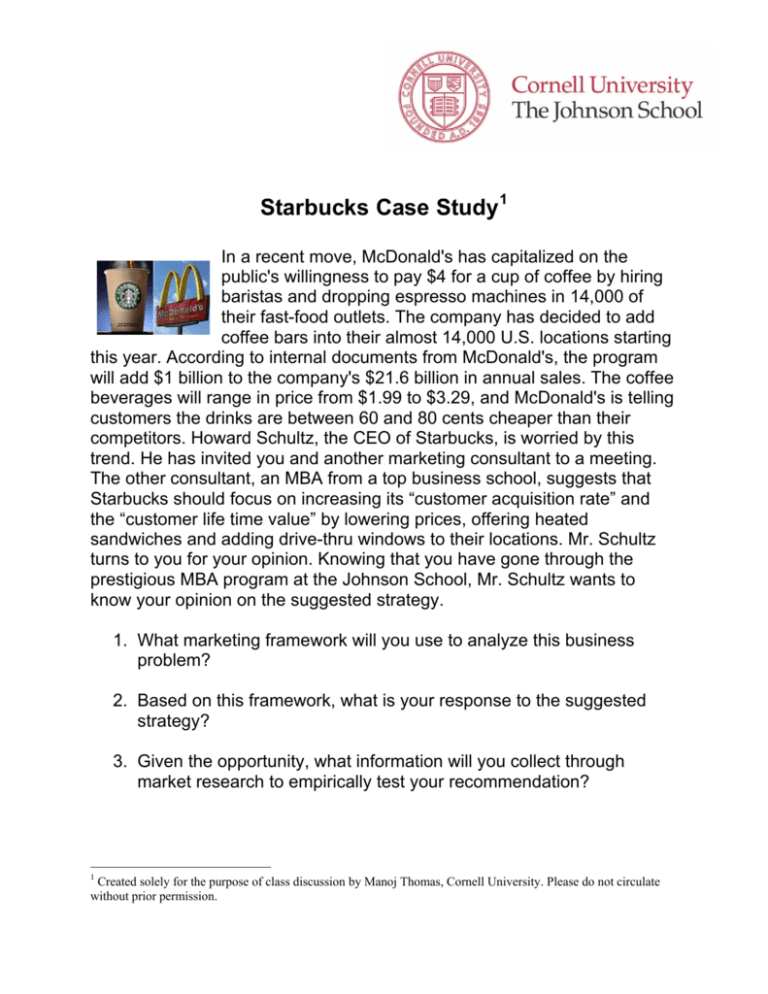
Starbucks Case Study1 In a recent move, McDonald's has capitalized on the public's willingness to pay $4 for a cup of coffee by hiring baristas and dropping espresso machines in 14,000 of their fast-food outlets. The company has decided to add coffee bars into their almost 14,000 U.S. locations starting this year. According to internal documents from McDonald's, the program will add $1 billion to the company's $21.6 billion in annual sales. The coffee beverages will range in price from $1.99 to $3.29, and McDonald's is telling customers the drinks are between 60 and 80 cents cheaper than their competitors. Howard Schultz, the CEO of Starbucks, is worried by this trend. He has invited you and another marketing consultant to a meeting. The other consultant, an MBA from a top business school, suggests that Starbucks should focus on increasing its “customer acquisition rate” and the “customer life time value” by lowering prices, offering heated sandwiches and adding drive-thru windows to their locations. Mr. Schultz turns to you for your opinion. Knowing that you have gone through the prestigious MBA program at the Johnson School, Mr. Schultz wants to know your opinion on the suggested strategy. 1. What marketing framework will you use to analyze this business problem? 2. Based on this framework, what is your response to the suggested strategy? 3. Given the opportunity, what information will you collect through market research to empirically test your recommendation? 1 Created solely for the purpose of class discussion by Manoj Thomas, Cornell University. Please do not circulate without prior permission.
